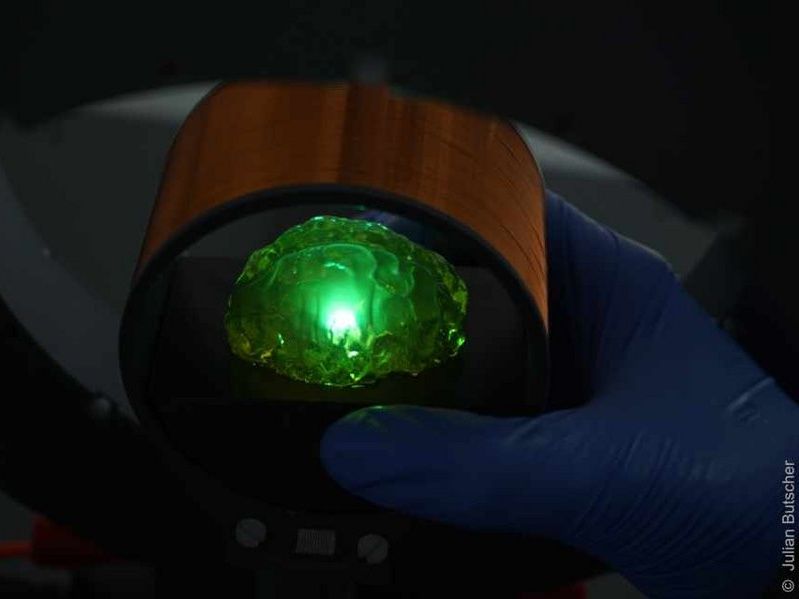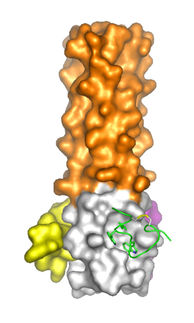Tiny wireless light bulbs for biomedical applications
The combination of OLEDs and acoustic antennas creates light source that can be used for minimally invasive treatment methods
A research team from the University of St. Andrews and the University of Cologne has developed a new wireless light source that might one day make it possible to 'illuminate' the human body from the inside. Such light sources could enable novel, minimally invasive means to treat and better understand diseases that today require the implantation of bulky devices. The study was published under the title ‘Wireless Magnetoelectrically Powered Organic Light-Emitting Diodes’ in Science Advances.

A wirelessly operated light source illuminates a transparent dummy brain
Julian Butscher
The new approach presented by scientists from Germany and Scotland is based on the integration of organic light-emitting diodes (OLEDs) and ‘acoustic antennas’. The potential of acoustic antennas for use in various areas, for example for the detection of low magnetic fields, is currently being explored. They can be very small compared to electric antennas. OLEDs are commonly found in modern smartphones and high-end televisions and consist of thin layers of organic materials that can be applied to almost any surface. In their work, the researchers exploit this property to apply OLEDs directly onto the acoustic antenna, thus merging the unique properties of both platforms into a single extremely compact device. In this way, the acoustic antennas serve as both substrate and power source for the custom-developed OLED. They convert energy from a magnetic field into a mechanical oscillation and subsequently into an electrical current by means of an effect known as the composite magnetoelectric effect.
The new devices operate at sub-megahertz frequencies, a frequency range used for example for submarine communication, as waves at this frequency are only weakly absorbed by water. However, unlike in submarines, the intended application in biomedicine requires a small device in order to avoid a negative impact on the tissue.
In recent years, optical stimulation techniques have emerged as a promising alternative to electrical stimulation because they can be more cell selective and even enable the stimulation of individual cells. Such techniques have already shown promising results in early clinical trials, for instance to treat an otherwise untreatable eye disease.
“Our novel wireless light source combines minimal device size, low operation frequency and optical stimulation,” said Humboldt Professor Dr Malte Gather, head of the Humboldt Centre for Nano- and Biophotonics at the Department of Chemistry of the University of Cologne’s Faculty of Mathematics and Natural Sciences. “Many emerging applications require multiple sites to be stimulated independently, which is why modern brain stimulators often incorporate a large number of electrodes. In the case of our wireless light sources, the devices can be independently controlled and operated without the need of additional and potentially bulky electronics.”
This is possible because the operation frequencies of different acoustic antennas can be tuned to different values. In the future, this could allow for the individual control of multiple stimulators in different parts of the body, for example to treat paralysis in the late stages of Parkinson's disease. As a next step, the researchers aim to further reduce the size of their wireless OLEDs and to test their technology in an animal model.
























































